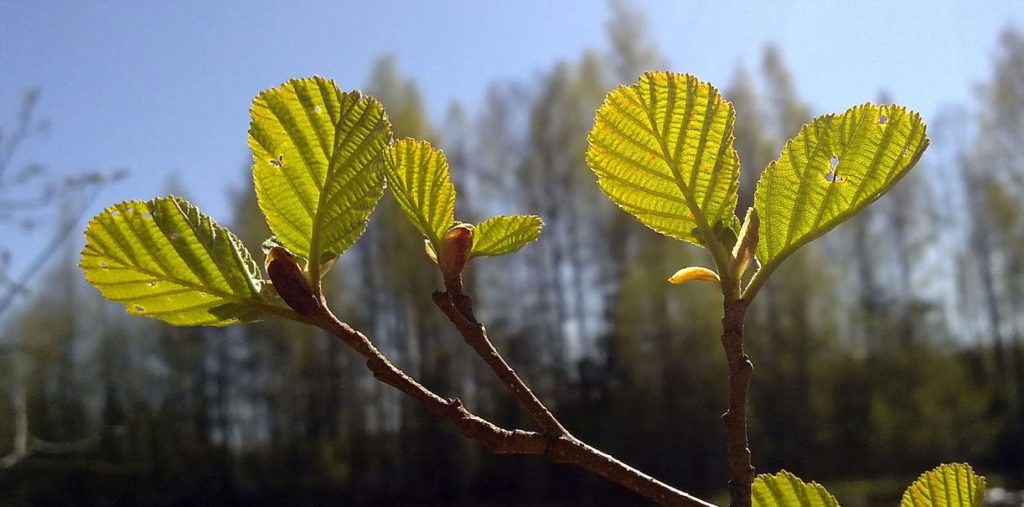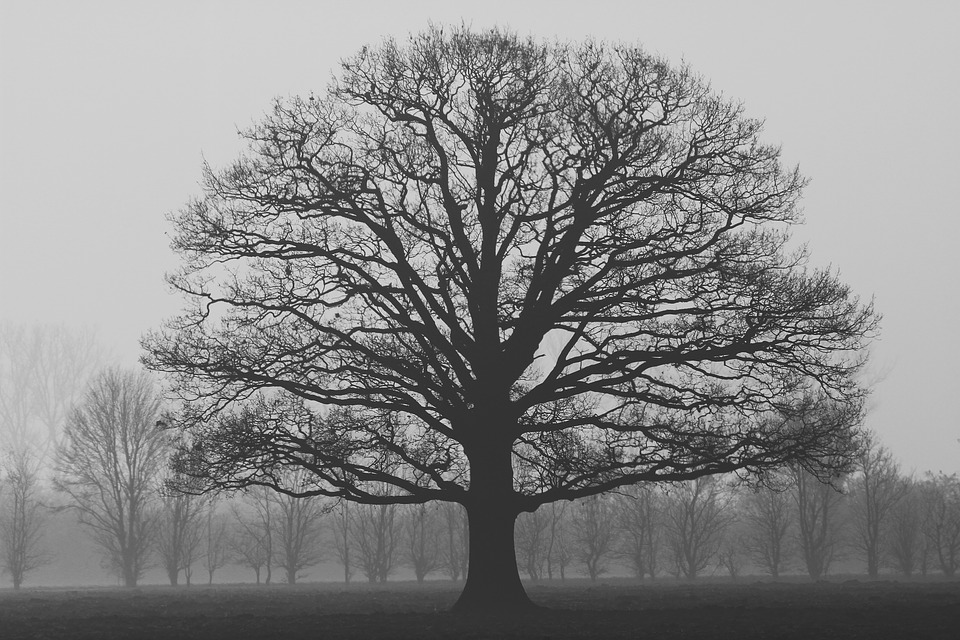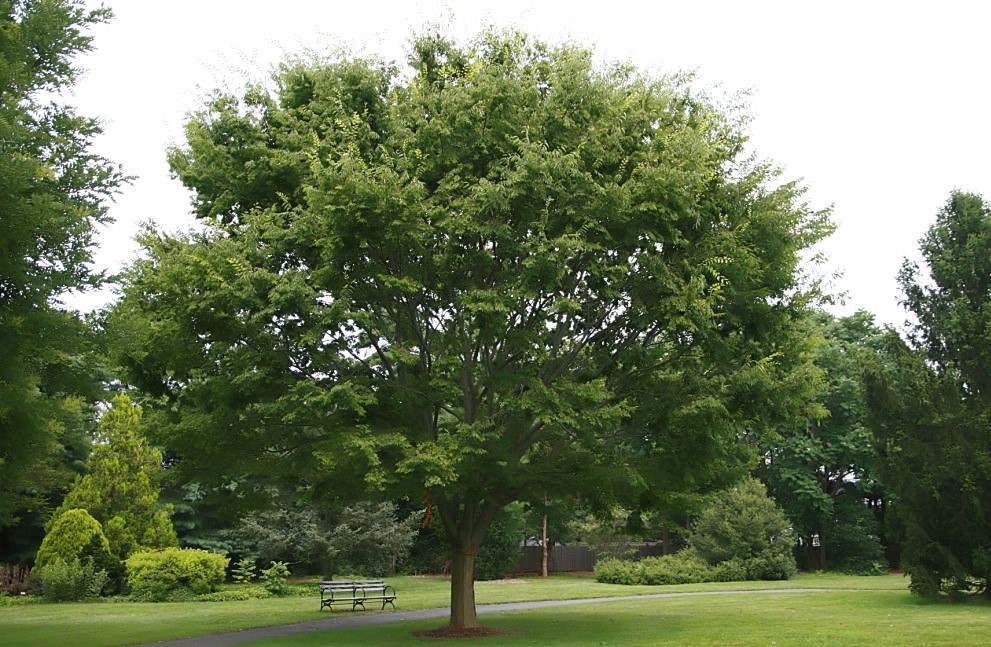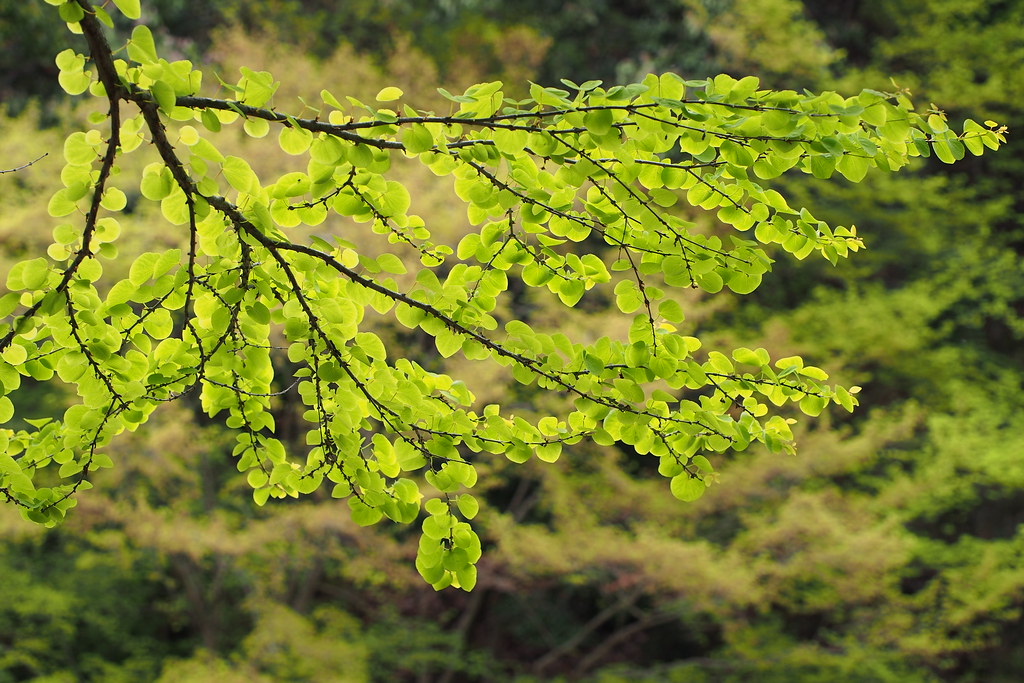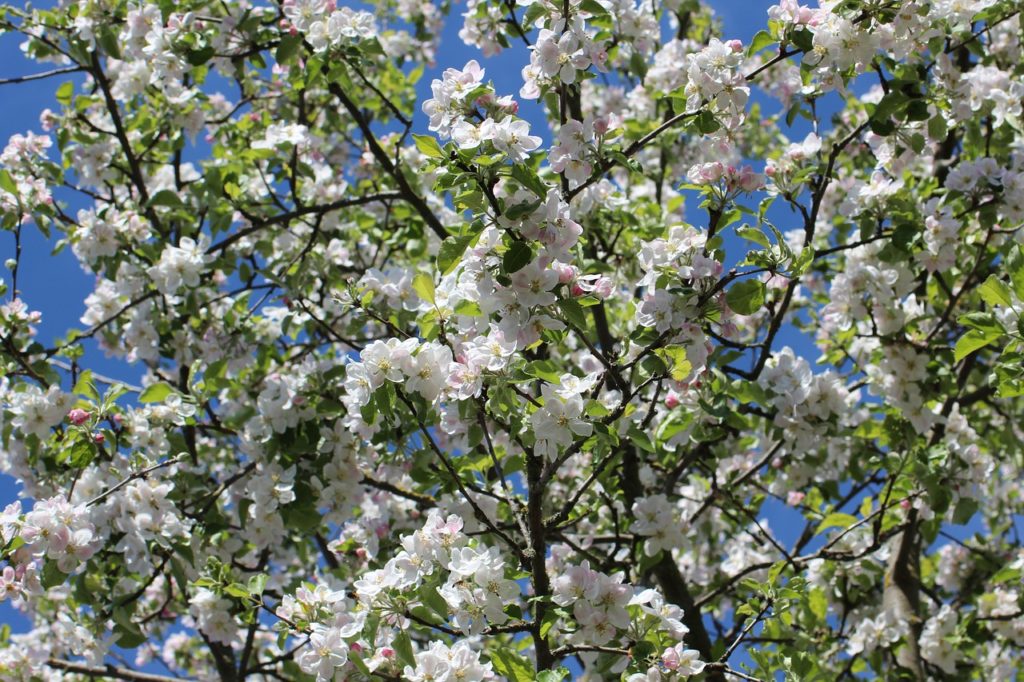Here in the Pacific Northwest we have trees, lots of trees. Majestic conifers (evergreens), including Fir, Spruce, Pine, Hemlock, and others fill our vast forests. We also have a diverse population of hearty deciduous trees (those that lose their leaves in the fall) in our urban and rural communities. Soaking wet winters and fertile soils in the Pacific Northwest create a haven for trees. This environment also means that our trees grow vigorously and therefore need to be maintained. This article is going to cover some tree maintenance tips to help you better mange your trees and understand their particular needs.
If you are a property owner, or if you are just a lover of trees like we are at
NW Tree Specialists, it is good to know the trees in on your property. There is a pretty good chance that the trees you “own” are under a certain amount of stress. This is because most trees in the urban environment are growing in less than ideal conditions. The reason is that the typical urban environment doesn’t provide the requirements trees need to thrive. Restricted growing space for roots and crowns, compacted soils, exposure to excessive heat, nutrient deficiencies, and vandalism are just a few conditions that may have a negative effect on your trees.
Knowing Your Trees is the First Step in Maintenance
An often neglected task, caring for your trees is a larger topic not within the scope of this article. The first step in proper management of your trees is knowing the species of trees under your care. You need to know your trees in order to properly care for them. Otherwise you could end up wasting time and money and have only limited success. The following is a list of the most common trees in the Pacific Northwest and ones you will most likely find around the urban environment. The purpose of the list, and the accompanying information, is to give you an idea of some the more common characteristics of each tree species as it pertains to tree management.
Numerous resources exist to learn more about tree nomenclature, origins, distribution, growth, and identification. However, that is not our purpose here, so we encourage you to click on the links provided to learn more about specific trees. Our goal is to create an awareness of issues to watch for and the types of tree maintenance needed. We hope these tree maintenance tips will help you and your trees co-exist.
Tree Maintenance Tips for Conifers:
Timing: While it is possible to prune evergreens year round, ideal timing is in late winter when the plants are still in dormancy. This pertains primarily to ornamental trees as it will minimize adverse effects pruning can have on the plant. Since larger conifers usually only require removing deadwood or lower branches, this type of work can be done year round with no adverse effects on the tree. Quick Links: Douglas-Fir, Western Red Cedar, Western Hemlock, Spruce, Pine, Cypress, Pacific Yew
Douglas-fir
Oregon’s official State tree, the Douglas-Fir is a fast growing tree that will survive in dry as well as moist conditions. Because it is a fast growing tree, all new growth is relatively weak and susceptible to breakage. This is why fir debris litters neighborhoods and parks after windstorms. This is unavoidable for existing trees, but when planting new, take into consideration the surrounding landscape. Douglas-fir do not fair well near buildings, courtyards, thoroughfares, and other highly maintained areas. They will cause too many issues down the road.
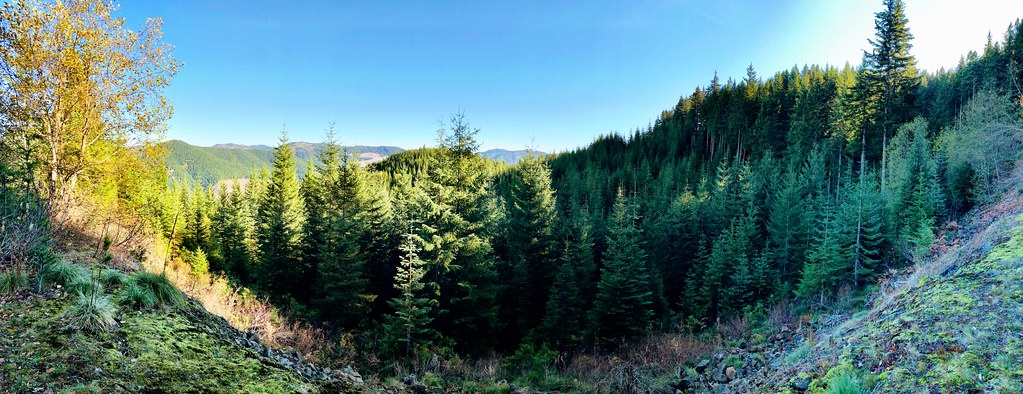
Tree maintenance tips for existing mature Douglas-fir include removing large deadwood, raising the canopy over structures, and cabling double-stemmed trunks. Never “top” a Douglas-fir. They are meant to grow tall with little chance of falling over strictly due to height, as long as they are left to sway in the wind. However, the top of a Douglas-fir can break off in a big storm. Broken tops are often out of sight, which can lead to overlooked issues down the road.
Another thing to consider with Douglas-fir trees is surrounding trees. Douglas-firs can grow just fine as a solitary tree and will develop a thick, solid trunk, long, majestic branches, and an extensive, anchoring root system. They also do very well grown in groups, or within a grove of trees. Under these conditions, they will grow leaner with fewer lower branches, which tend to die due to lack of sun, and an intertwined, community root system. Within mature stands of Douglas-fir, even with just two to three trees, each tree becomes reliant on the other for protection from wind. New wind conditions from removed trees can lead to failure of exposed branches, trunks, or even entire trees.
Western Red Cedar
Another very iconic tree in the Pacific NW, second only to Douglas-fir trees, Western Red Cedar is part of the Cypress family and not a true cedar. Reddish or grey fibrous bark, flattened, scale like foliage, and branches that swoop downward from the trunk and turn up at the end points are the distinguishable features of these beauties. They do well in moist to wet soils and are great additions to landscapes either singularly or in groves.
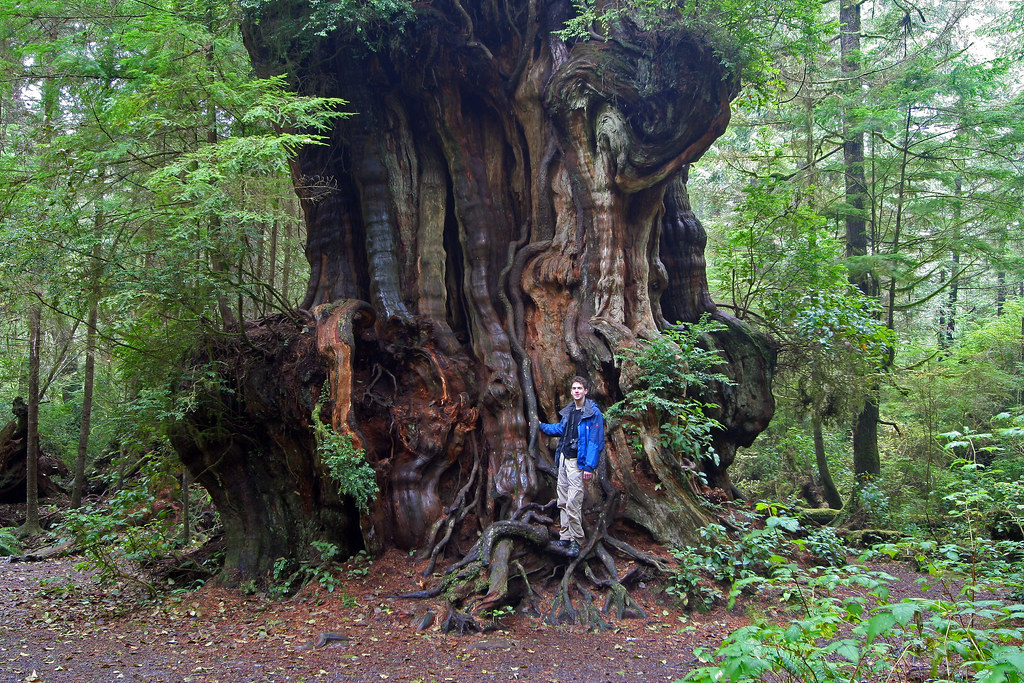
Tree maintenance tips for Western Red Cedars include removing dead and diseased branches and lifting the canopy if you plan to install plantings around the base of the tree or if located near structures. You can also manipulate the branches to form a more conical growth shape, but we recommend just leaving the tree to form naturally. It is also important to maintain a single main stem (trunk). Any competing stems that form should be removed. That is about it. Pretty low maintenance trees.
Western Hemlock
Easily one the more prolific trees in the Pacific NW, Western Hemlock would be the dominant species in our forests, were they left undisturbed. Identified by its flat leaf pattern with short needles and a typically drooping top, it is another great addition to the landscape as it tolerates varying levels of moisture in the soil and can survive in full sun to mostly shaded area. 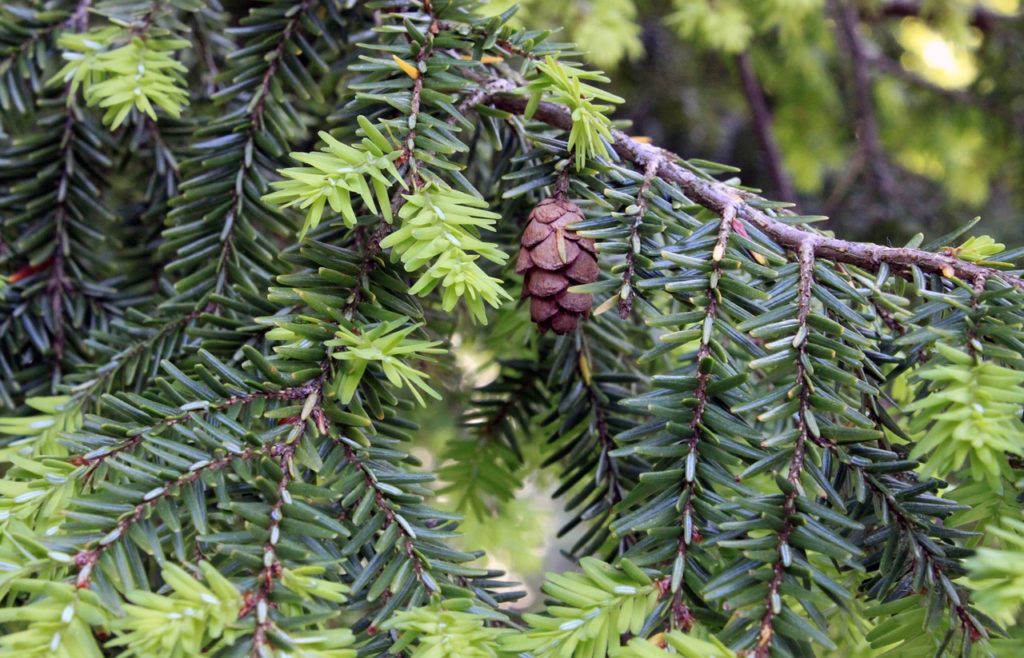
Similar to the Western Red Cedar, the Western Hemlock is a fairly low maintenance, so tree maintenance tips include removing dead and diseased branches and raising the canopy off structures and to allow sun into the under growth. Maintaining a single trunk is also important for Western Hemlocks.
Spruce
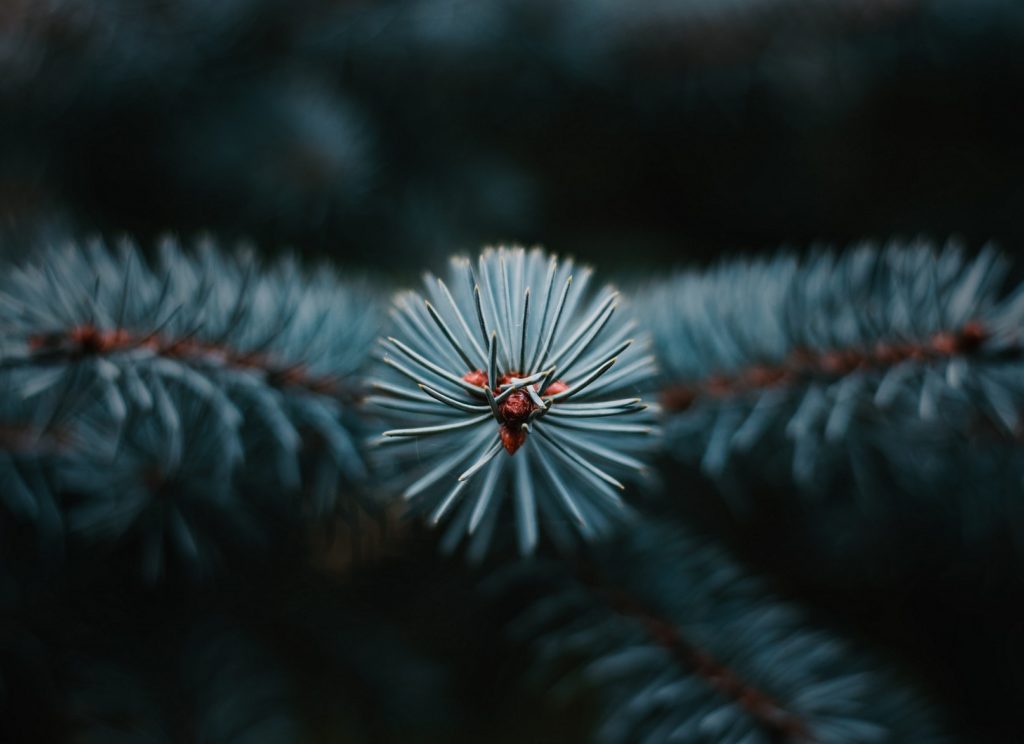
Another conifer that has low maintenance needs, the
Spruce (Sitka, Blue, and Englemann) is very distinguishable from its conifer counterparts by its stiff, sharp needles that grow around the entire branch stem. Tree maintenance tips include lifting the canopy over structures and removing deadwood. We do not recommend any other pruning. Width control can lead to a very dense canopy. Like all the other trees mentioned thus far, maintaining a single main trunk is ideal for aesthetics and safety reasons.
Pine
(Ponderosa, Lodgepole, Shore, Western White, Scotch/Scots) – When it comes to conifers, most people just call them Pine trees, often misidentifying firs, spruce, hemlocks and cedars as “Pine trees”. As well, “Pine cones” are often mislabeled as fir cones, spruce cones, cedar cones, etc. Although there are many varieties of Pine trees (115 worldwide), this species does not encompass all conifers. Pine trees are distinguishable from other conifers in that they grow their needles in clumps of 2, 3, or 5 needles and are typically much longer than the needles on other conifers.
Some of our more majestic Pines, like Ponderosa and Lodgepole Pines, are far to big for a small urban landscape. These trees are very common east of the Cascade range. If you ever drive out to Bend or Sisters, you will see them as you come down from the pass all the way into town. Smaller pines, like Shore and Scotch Pines do fairly well in the urban landscape, but if not properly irrigated, they are heavily susceptible to the deadly Pine Bark Beetle.
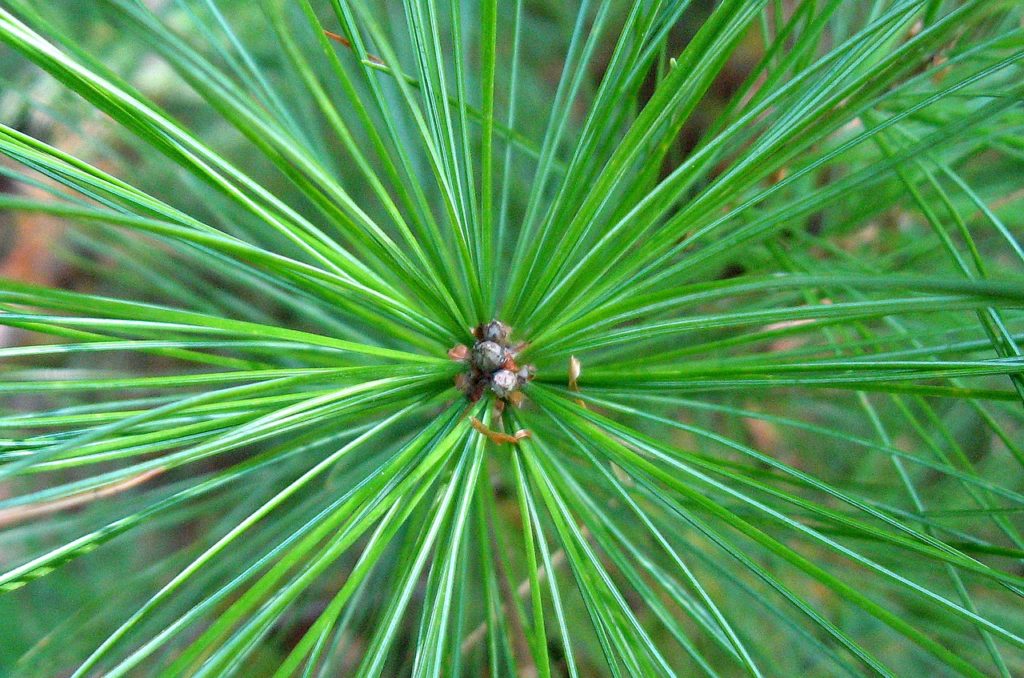
Tree maintenance tips for Pines include removing deadwood and lower branches over structures. Pine trees have are very efficient when it comes to sun exposure. Lower branches die off as they get shaded out by the upper canopy. Similarly, smaller interior branches die back as well. The trees will focus their energy and growth where the sun shine. So it is very common for Pine trees to have a good amount of deadwood in them. Pine trees also shed a fair amount of their needles every year. Couple this with needles from recently dead branches and quite a number of needles will fall from the tree any given season. This foliage can accumulate on structures and in gutters and cause problems down the road. Clearing debris from roof tops is important in maintaining structural integrity of a roof.
Cypress
The cypress family encompasses around 135 different species including some of our common ornamental plants (Arborvitae and Juniper), larger species (Leyland Cypress, Alaskan Yellow Cedar, and Incense Cedar) and some of the planet’s giant trees (Coast Redwood and Giant Sequoia). Overall, Cypress trees are considered low maintenance. However, here are some tree maintenance tips to follow for particular varieties.
Ornamentals
Arborvitae are great for establishing a border and for privacy. If maintained and protected during storms, they will provide you with a beautiful evergreen hedge for many years. However, they can become unruly, unsightly, and are prone to limb bending and breakage during storms, especially snow storms. Good shape and size can be maintained with annual shearing on side and top. If heavy snowfall is expected, covering the plants with tarps or other protective structure will help in preventing over-weighted limbs from becoming deformed and breaking.

Another somewhat popular Cypress is Juniper (above), which has a
wide range of shapes and sizes. The reason we say they are somewhat popular is that this is one of those plants that one either loves or hates. Not much middle ground here. Juniper can have short sharp needles, scraggly foliage, and an off-putting odor. But they can also be very dynamic and add texture and color to a well manicured landscape. It is grouped into three categories: ground cover, mounding, or tall upright. When used as a ground cover, pruning is not needed except to contain it within a border, if necessary. Upright varieties need very little pruning except to maintain shape, if desired.
Larger Varieties
Similar to many of its conifer counterparts, larger Cypress require very little maintenance pruning. Maintaining a single trunk (especially with Coast Redwoods and Giant Sequoia), removing deadwood, and raising the canopy over structures is all that is needed. An exception is the Leyland Cypress, a great tree for larger hedges and privacy. These trees are fast growing and can reach heights of 60 – 70 feet. Unfortunately, at that height they are susceptible to wind damage, so once they have established a desired height they should be maintained. Annual growth can be up to 24″, so a two or three year pruning cycle is a good schedule for maintenance.
Pacific Yew
Of all the conifers mentioned in this article, the Pacific Yew (below) is probably the easiest to maintain and forgiving when heavily pruned. Most conifers, when pruned back to older wood, will not grow new shoots. Yews will regrow foliage on older wood and therefore can be heavily pruned back to maintain shape or completely re-structure the plant. They can also be left alone to grow into fine looking shrubs or controlled and shaped into many different forms. Left untouched, Pacific Yew can grow up to 45 feet, but most don’t get that tall as they are a slow growing tree.
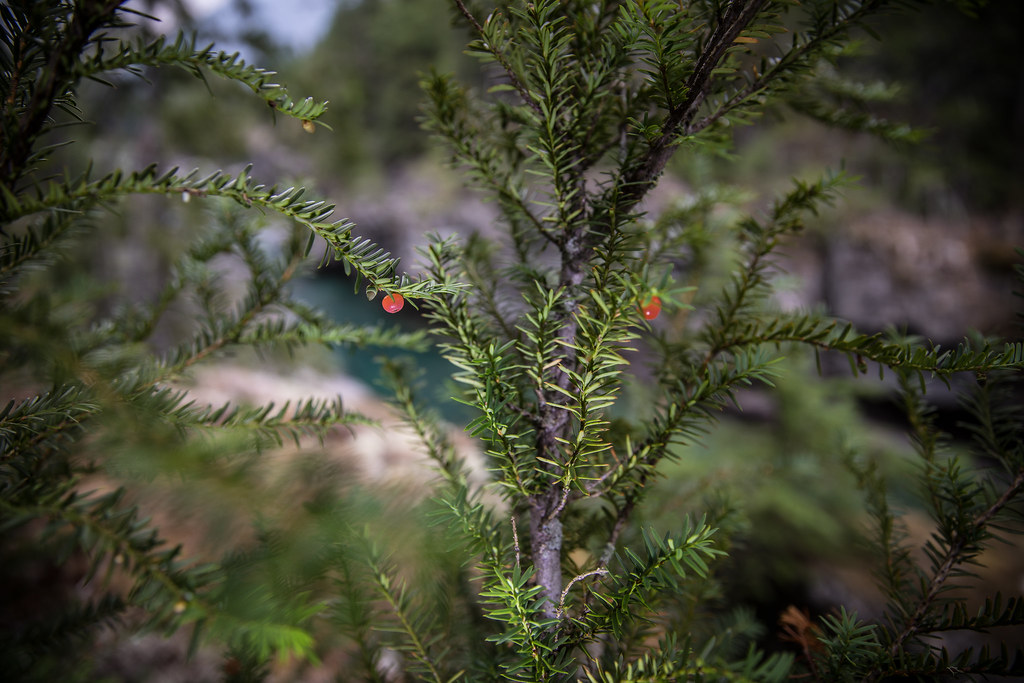
Tree Maintenance Tips for Deciduous Trees:
Timing: Due to the seasonal changes that happen with deciduous trees, pruning is different than with conifers. The ideal time for maintenance pruning is winter and early spring before the buds begin to break. However, similar to conifers, non-routine pruning like removing weak, dead, or hazardous branches or raising canopies over structures can be done year round. There are a couple of exceptions to this due to the potential for insect or pathogen infestation at certain times of the year for certain species. For the most part, tree maintenance tips for deciduous trees are similar across most species.
Common pruning techniques include removing crossing and rubbing branches, thinning out canopies for better air circulation or light penetration, and shape manipulation (either for aesthetics or for surrounding infrastructure). As a general rule, no more than 30% of a tree’s canopy should be removed in one season. Over pruning can generate rapid regrowth and place undue stress on the tree. Also, as trees mature, routine maintenance pruning becomes less and less necessary, especially if the tree was properly pruned when younger.
Below are some of the common deciduous trees found in the Pacific Northwest urban environment. Specific pruning needs and health considerations are identified where applicable. Please note, there are vast numbers of pests, fungi, and disease that affect deciduous trees. Far to many to cover here. There are a great resources online that can help you identify specific issues and treatment options if you need. Just Google “(
tree species) issues” and you will get some great results.
Maple (Red, Sunset, Japanese, Big Leaf, American, Silver, Paperbark, Coral Bark)
There are approximately 125 Maple varieties, each with different characteristics and site requirements. There are no specific pruning requirements for Maples, but there are several pests and diseases that they are susceptible to. The most common is: Verticillium Wilt is a very serious fungus infection that Maples are highly susceptible to. So much so that it is often called Maple Wilt. This fungus can cause trees to fail. Infected trees have “scorched” looking branches with wilting leaves and discolored streaks in the wood. Verticillium can be pruned out of a tree by pruning back to healthy wood. Disinfectant practices to pruning tools is a must in order to prevent spreading the disease to non-infected parts of the tree.
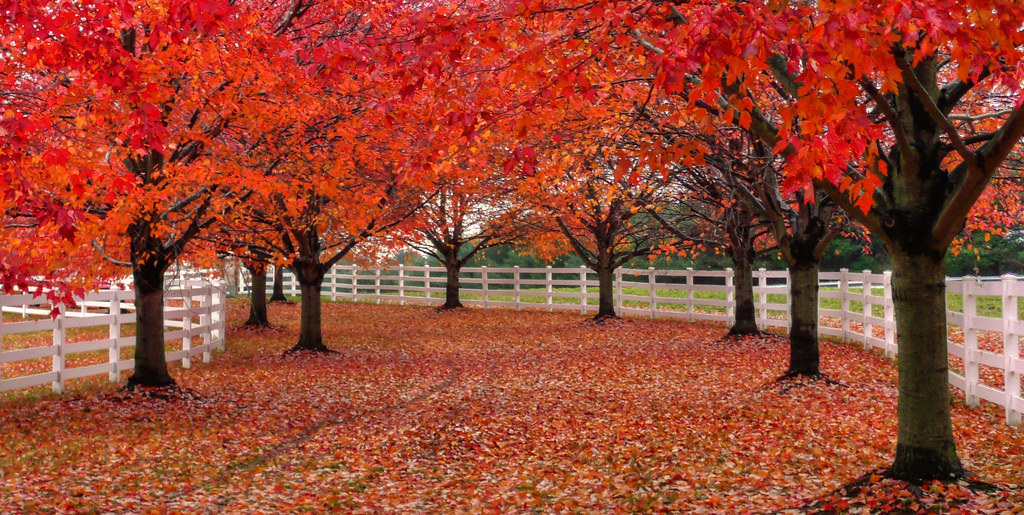
Elm
Of all the deciduous trees, the Elm is probably the most in danger right now. These stately trees lined many trees in the Midwest and eastern towns of the US. Here in Portland, there are many neighborhoods where all the trees lining the streets are Elm. They help define those neighborhoods and enhance their appeal. However, Dutch Elm Disease has wiped out nearly all the Elm trees in the Midwest and eastern town and is doing a number on the trees here. Luckily metropolitan areas in the western states became knowledgeable of the disease and implemented measures before the disease became unmanageable.
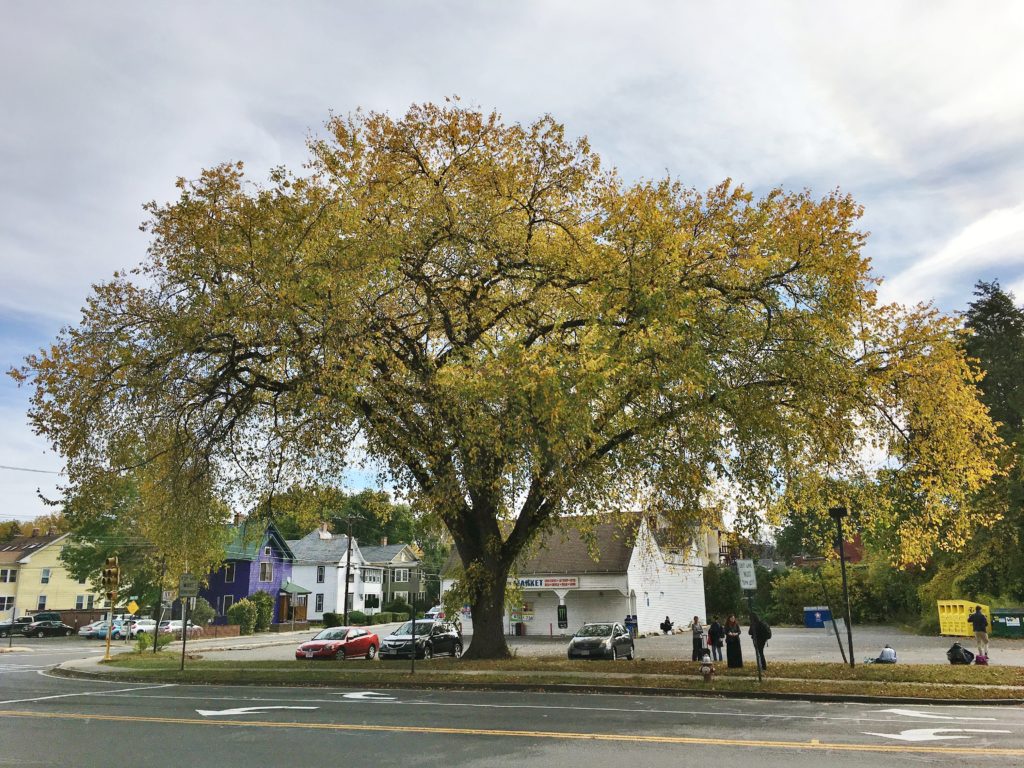
There is a lot of information that can be found on
Dutch Elm Disease and the fungus that creates it, but that is out of the scope of this article. The Elm Bark Beetle, which is attracted to freshly cut elm wood, is responsible for spreading the fungus. So the City of Portland has strict regulations when it comes to pruning elm trees. Please see their
Elm Protection Program page for more information including annual reports of the disease. You are not regulated under their rules if you live outside the city limits. However, their program is a great example of how we can protect our Elm trees from this devastating disease.
Oak (White, Pin)
The Oak is another of our stately trees. A slow growing and strong wooded tree, the mature Oak does not require a lot of maintenance pruning with the exception of a good clean out every few years. These trees don’t break to often, but they can have unforeseen, and sometimes devastating, hazards. Large Oak trees are pretty old. They grow slowly, so if you have a large Oak tree on your property, chance are it has been around for a long time.
One outdated arbor practice for Oak trees was using concrete to fill cavities thinking this would provide protection and strength to the trunk. The opposite is more likely. The concrete actually prevents the tree from healing a wound and can promote decay, hidden decay. If you have a large Oak tree on your property, having a certified arborist inspect the tree when pruning is a good practice. They can identify potential decay near any old wounds and make recommendations for risk reduction.
There are many pest and diseases that can have an impact on Oak trees. Most are fairly benign, causing mild season damage to foliage or premature leaf drop. However, there are a few serious pathogens that can cause trees to fail. Luckily, only one is currently present in Oregon, Sudden Oak Death (SOD). SOD is a federally quarantined pathogen found in northern California and Curry County, Oregon. It is also found in nurseries in California, Oregon, and Washington.
Due to the quarantine, the chances of SOD infecting a tree in our urban environment is extremely low. However, it is good to know about it and be aware of its symptoms. SOD appears as drought stresses leaves that will discolor and wilt, dying quickly in late spring and early summer. Bark near the base of the tree will darken and a red-brown discoloration of wood under bark will develop. Please note, wilting and dying leaves are symptoms of other pests and pathogens, so the only way to confirm SOD is through laboratory testing.
Beech
In terms of shear beauty, the Beech is one of our favorites. These majestic trees are some of our most colorful in the fall. The bright red, yellow, and orange fall foliage beautifully contrasts the smooth dull grey of the tree trunk.
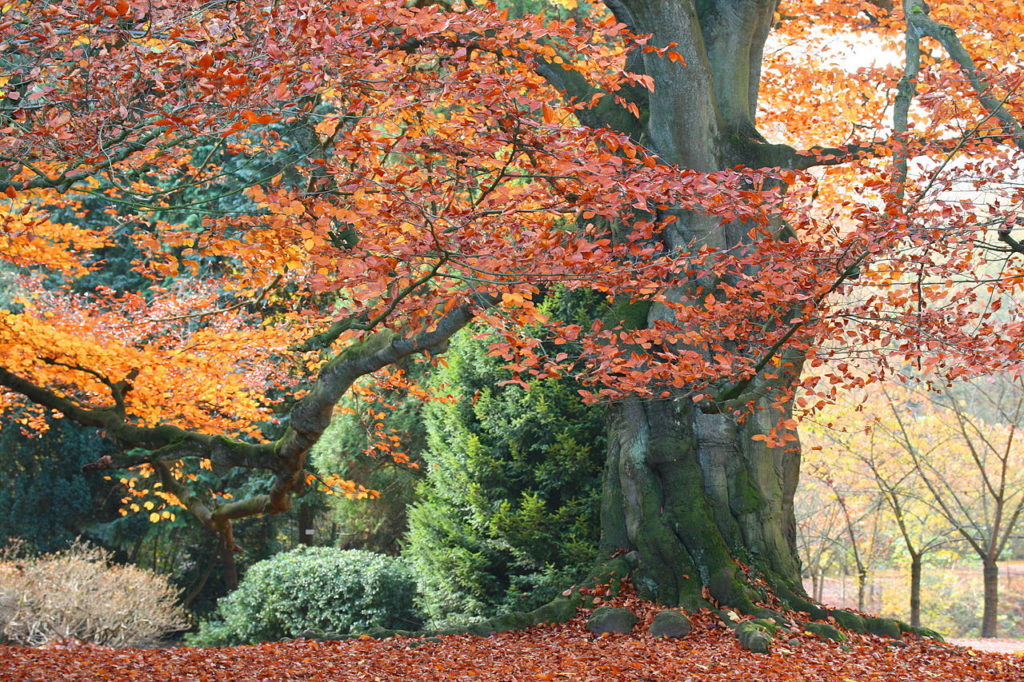
Beech trees are fairly low maintenance with only minor pruning needed. All they usually need is removal of crossing branches, water sprout growth, and broken and dead branches. With the exception of Aphids, which be a nuisance, Beech are not susceptible to any serious pest or diseases in the Pacific Northwest.
Birch
Birch trees are some of the most popular trees for landscape focal points due their striking bark and modest size. Two of the most common varieties are the White Birch (below left) and the River Birch (below right).
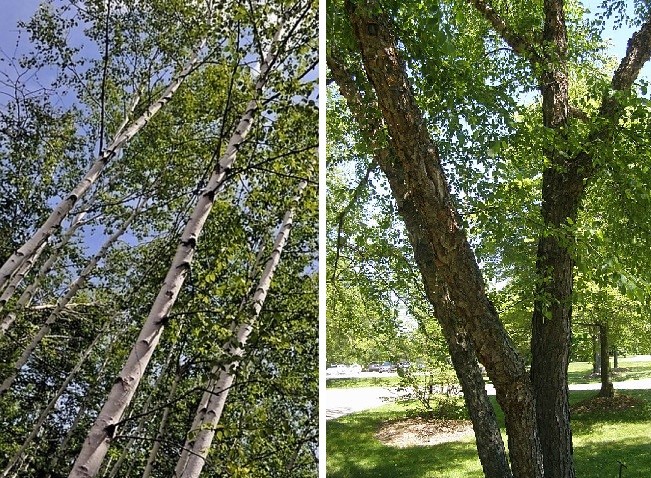
Well maintained and healthy Birch trees are a great addition to any landscape, but they are susceptible to a few pests. The Bronze Birch Borer (BBB) is the most common and is active in the Pacific Northwest. It is probably more common to see an infested Birch tree than a non-infested one. That is how prevalent the pest is in the Portland area. Common signs of an infestation are thinning crown with die back starting at the top of the tree, and “D” shaped beetle entry holes in the trunk. Luckily, BBB is treatable if caught early. Left untreated, BB is fatal to the tree. Treatment includes removal of infested wood and pesticide applications. Pruning recommendations include maintaining a central leader, removal of branches with poor structure, removal of dead, diseased, and broken branches, lifting over walkways, buildings, and surrounding landscape plants.
Poplar
Polar is a large group of fast growing trees in the Willow family. This family includes Lombardy (Black) Poplar, Aspen, Cottonwood, White Poplar, and Balsam Poplar. Lombardy Poplar work very well as a windbreak or privacy screen without taking up a lot of space due to their columnar shape and fast growth. However, they eventually become a nuisance due to their potential size and short lifespan. Cottonwood also get very large in s short period of time and create a mess in the spring by releasing millions of seeds surrounded by cottony fibers. They have a short lifespan (30 – 40 years) and a very aggressive root system.

The above photos depicts an ideal location for a row of poplars. There is plenty of water and little surrounding infrastructure. As you can see, Poplars can be quite stunning in the right setting. But put these same trees in a row along a road or near a house or apartment building and you have problems waiting to happen. Under these less than ideal conditions, the trees will be stressed. Their lifespan will be shortened. They will wreck havoc on foundations, road surfaces, and structures. And after they reach their full height, they will become hazards as they begin to die and fall apart. Removal can be tricky as once they are dead, they usually cannot be climbed.
Our best advice regarding Poplars, is not to plant them. If one should start to grow in your yard and you don’t have the space to accommodate its eventual size, remove it as soon as possible. The one exception may be Aspen trees, although be aware that Aspens will sprout new trees from their root systems. Aspens don’t grow nearly as big as Poplars. They are beautiful in the fall and winter, but they do sprout from their root systems. Anywhere in your yard or garden the root system decides to expand into, you will have to deal with sprouts. If you are an unlucky new owner of a property that has mature Poplars, keep a watchful eye on them. Regular pruning to remove deadwood and controlling the size is necessary to minimize potential risk. If you live in a dryer climate, they will need additional watering in the summer. Watch for signs of disease, like black sunken areas on the trunk and branches, a sign of cankers. Prune out diseased branches to control the spread.
Ash
A very popular and good looking tree is the Ash. With proper maintenance, including regular pruning, Ash does well in the urban landscape. Un-pruned Ash trees can develop poor structure with weak branch junctions and multiple central leaders. Pruning also benefits the tree by opening up the canopy for better air circulation and exposure to sunlight.
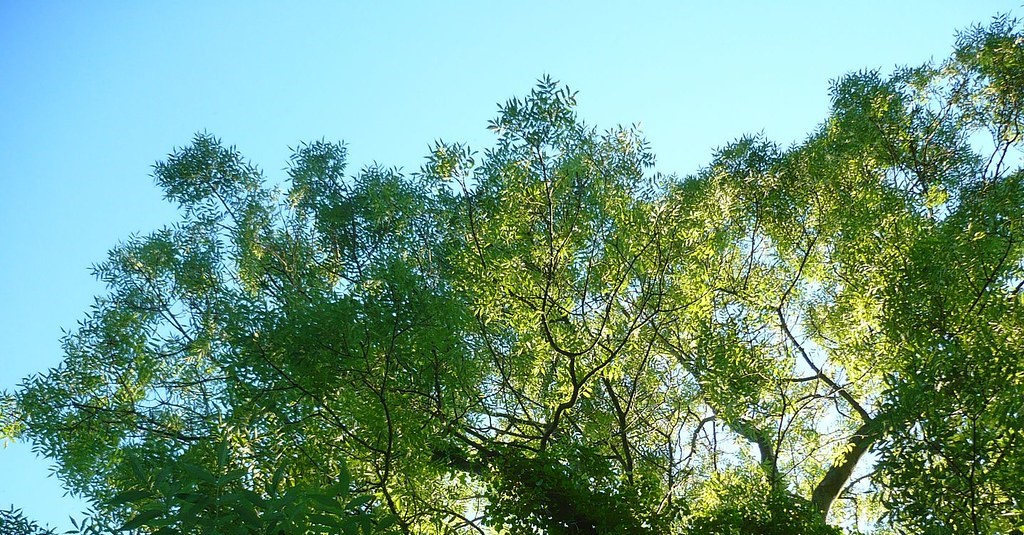
A primary pest that infests Ash is the Emerald Ash Borer (EAB). This is a devastating invasive beetle that has killed tens of millions of Ash trees in the United States. Luckily, EAB has not appeared in Oregon as of 2020. However, the pest has been spreading across the country since it was first detected in Michigan in 2002. Efforts to reduce the pest population have been successful, but they have not been eradicated. Unfortunately, the state of Oregon does have systems in place to detect and quarantine in the event the beetles come to the Pacific NW. Other Ash diseases and pests include: Anthracnose, Verticillium Wilt, mites, mildews, rust and the
Banded Ash Clearwing.
Alder
Red Alder is one of the most prolific hardwood tree species in the Pacific Northwest. It has played a big part in our historical timber industry. In the urban landscape, routine maintenance pruning is recommended as unpruned Alders can become thick, bushy, and unattractive. This can lead to hazardous conditions and eventual need for tree removal.
